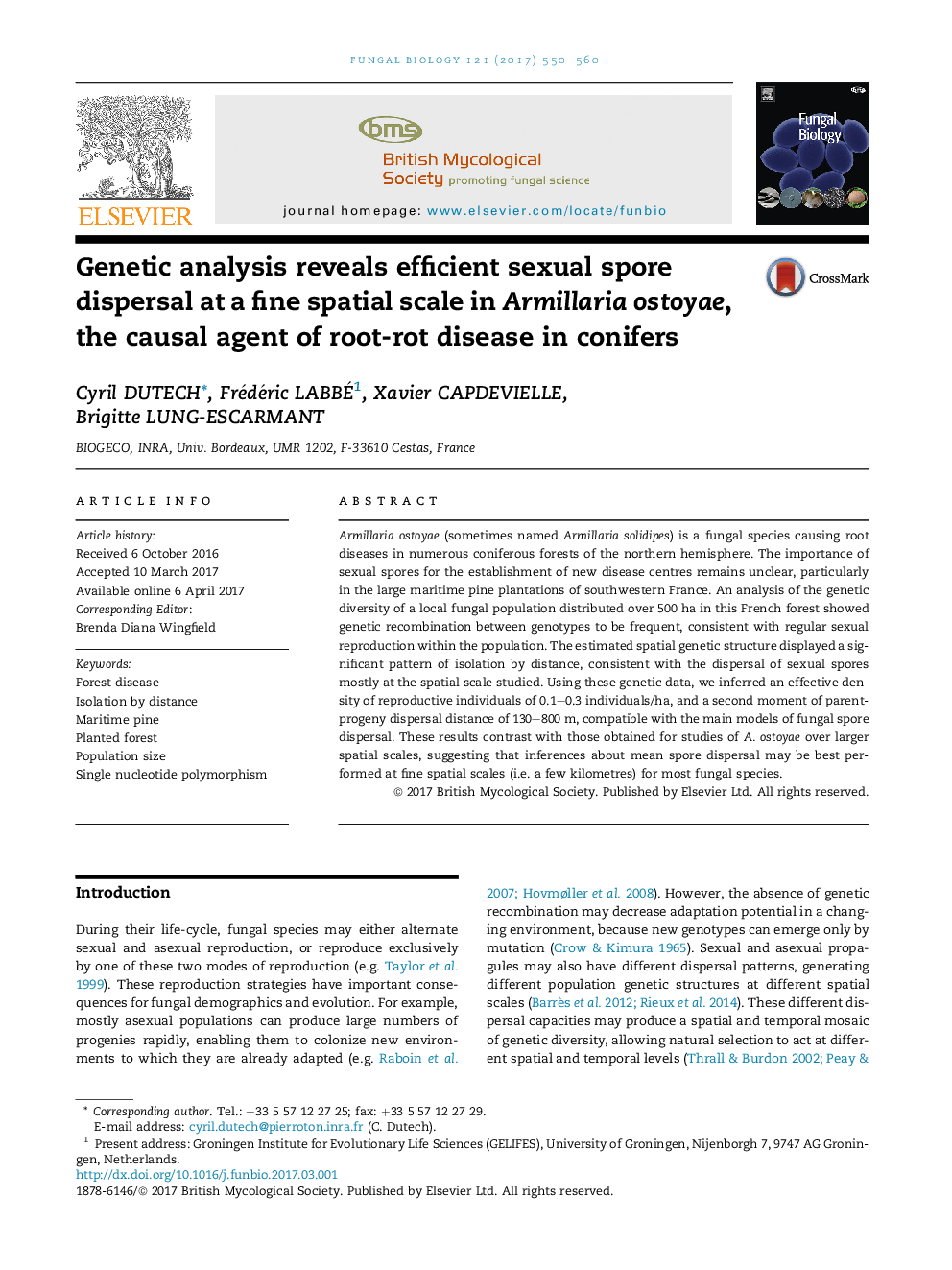| Article ID | Journal | Published Year | Pages | File Type |
|---|---|---|---|---|
| 5739633 | Fungal Biology | 2017 | 11 Pages |
â¢Genetic analyses revealed that sexual spores were dispersed at few hundred metres in the fungal pathogen A. ostoyae.â¢This finding contrasts with other studies, highlighting the importance of spatial scale for estimating dispersal processes.â¢A low effective population size and second moment of the parent-progeny dispersal distance were derived from this analysis.
Armillaria ostoyae (sometimes named Armillaria solidipes) is a fungal species causing root diseases in numerous coniferous forests of the northern hemisphere. The importance of sexual spores for the establishment of new disease centres remains unclear, particularly in the large maritime pine plantations of southwestern France. An analysis of the genetic diversity of a local fungal population distributed over 500Â ha in this French forest showed genetic recombination between genotypes to be frequent, consistent with regular sexual reproduction within the population. The estimated spatial genetic structure displayed a significant pattern of isolation by distance, consistent with the dispersal of sexual spores mostly at the spatial scale studied. Using these genetic data, we inferred an effective density of reproductive individuals of 0.1-0.3 individuals/ha, and a second moment of parent-progeny dispersal distance of 130-800Â m, compatible with the main models of fungal spore dispersal. These results contrast with those obtained for studies of A. ostoyae over larger spatial scales, suggesting that inferences about mean spore dispersal may be best performed at fine spatial scales (i.e. a few kilometres) for most fungal species.
